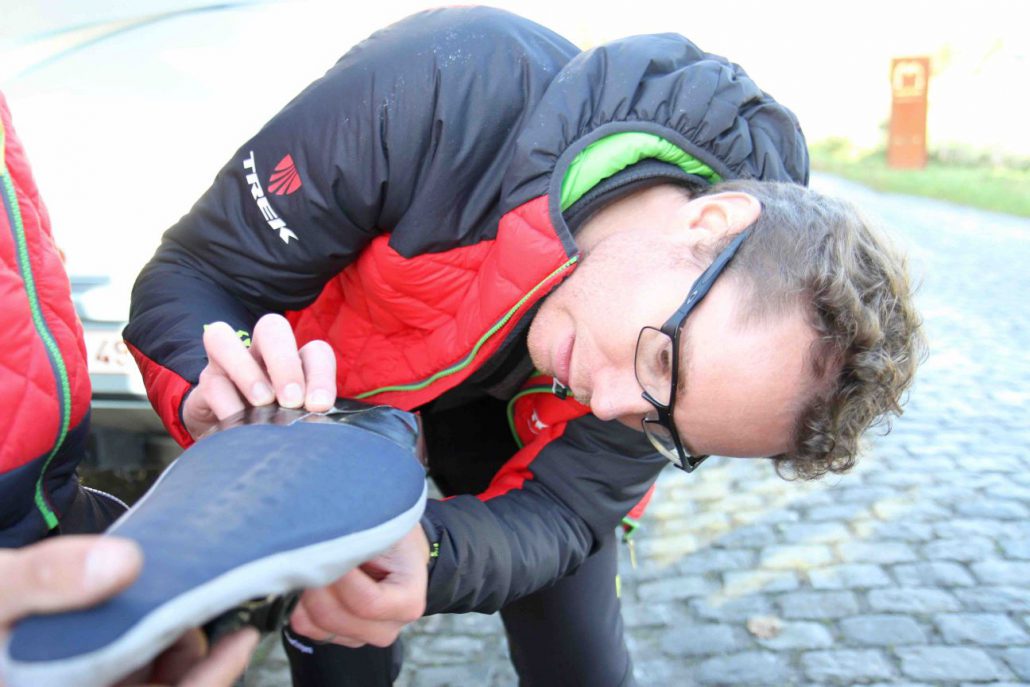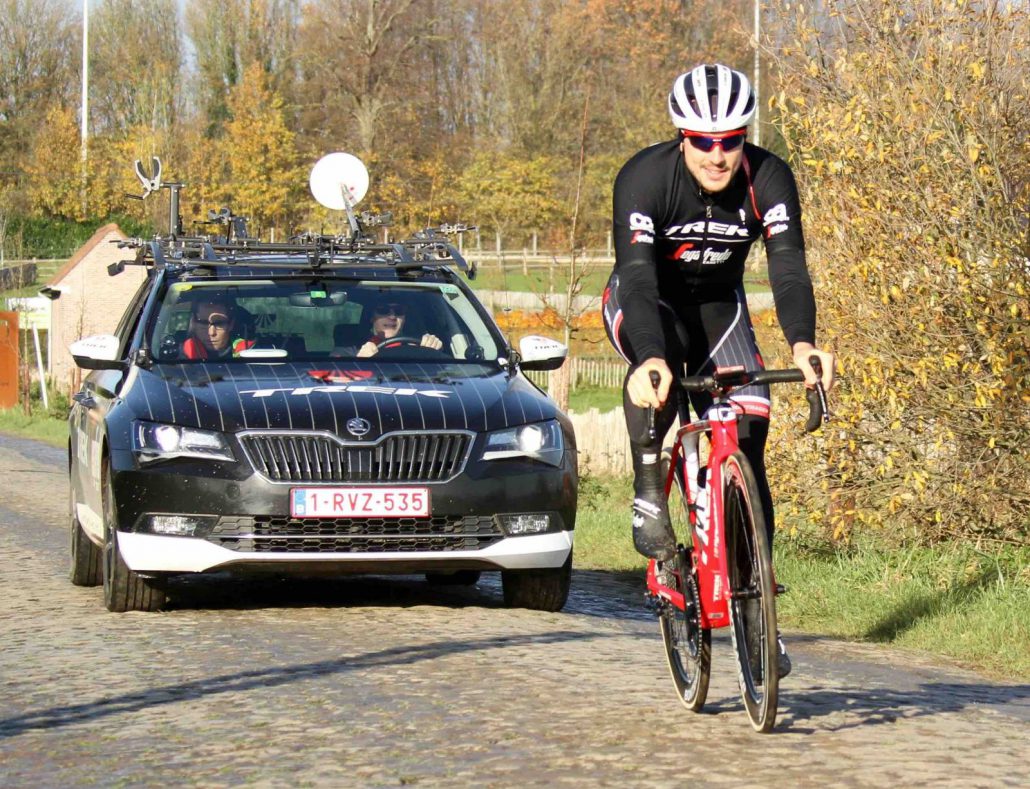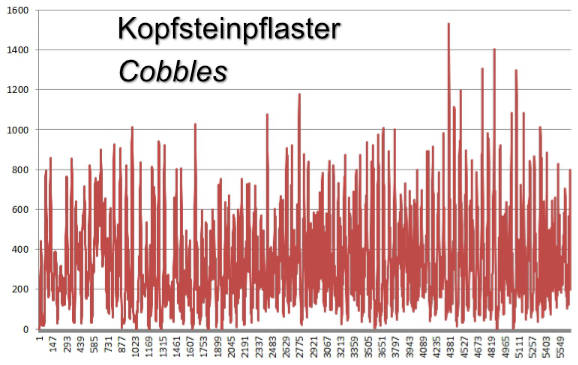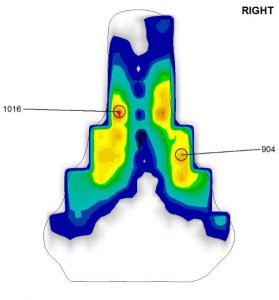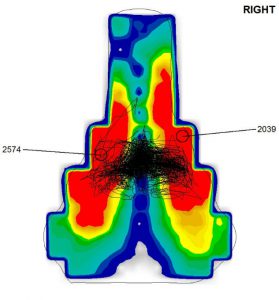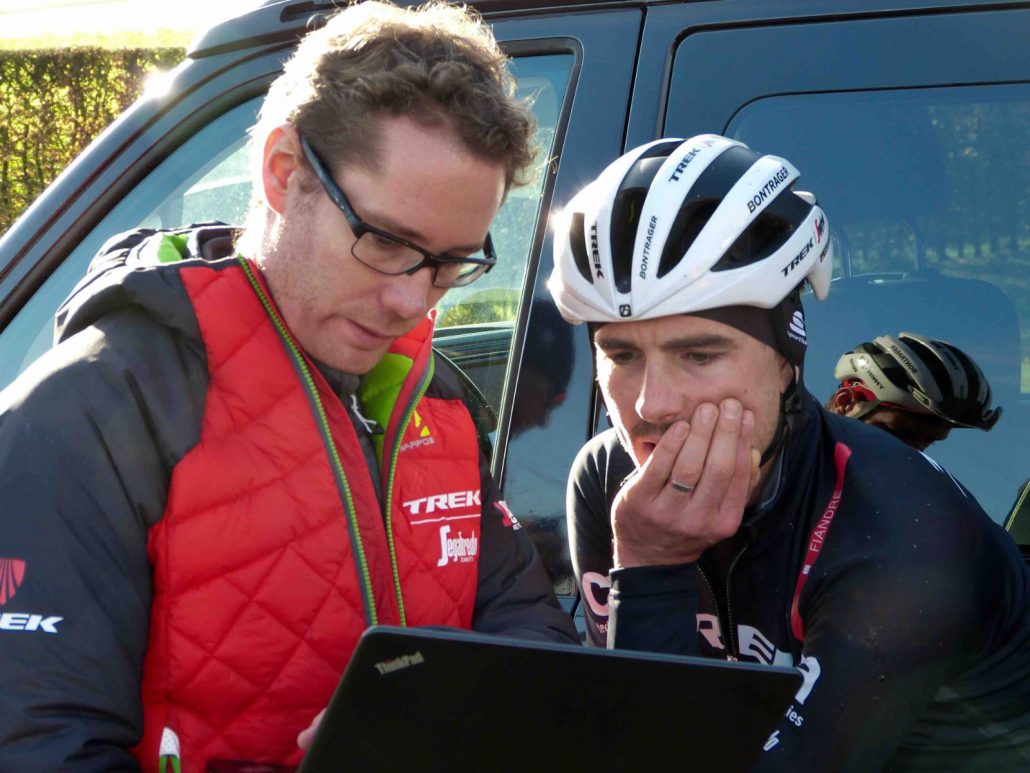The Hunt For The Cobblestone Formula
“Go! Go! Go!“ John Degenkolb wants to attack at Tour of Flanders and Paris-Robaix. In order to speed over the cobblestones of these spring classics, “Dege” put a lot of effort and commitment into his race set-up – together with the sports scientists of gebioMized.
The current calendar of the world cycling association UCI comprises exactly 464 entries of pro road races. From Norway to Australia, from China to Canada. But among them, there are only two one-day races that presumably every pro cyclist highlights in red color in the calendar. Either in order to avoid the dreaded cobblestone passages or because they are the most important races of his race season. The latter certainly is true for John Degenkolb. When the two cycling monuments Tour of Flanders (April 1, 2018) and Paris-Roubaix (April 8, 2018) take place, the pro cyclist of Team Trek-Segafredo wants to ride at the front of the peloton. Right at the front!
“Tour of Flanders and Roubaix are two of my season’s A-races. Therefore, all has to be perfect and I do not want to leave anything to chance”, explains Degenkolb.
His mission: to shine on the dreaded cobblestones and to nab the next big win after 2015. Back then, he was the first German rider to win the prominent cobblestone trophy in the Vélodrome de Roubaix since Josef Fischer won this race in 1896.
“Tour of Flanders and Roubaix are two of my season’s A-races. Therefore, all has to be perfect and I do not want to leave anything to chance”, explains Degenkolb.
“This was one of the moments I’ll never forget. Pure goose bumps. Indescribable”, John Degenkolb recounts – and longs for a repetition. In 2016, a severe accident in training camp put him out of action, in 2017, he finished 10th.
Staccato Over Bumby Roads
This is why “Dege” and his training partner Jasper Stuyven again and again catapult their race bikes over the merciless bumpy roads on a cold November day. At a time of the year, at which most of their competitors only slowly ease back after season break. A lot of effort for the sake of science and with a big goal: to determine which bike with what set-up is the most advantageous for the special demands of Tour of Flanders and Paris-Roubaix. On board: gebioMized technology for the mobile analysis of the set-up, especially at the saddle contact point.
“We are in search of the perfect cobblestone formula”, reveals Daniel Schade.
The gebioMized sports scientist sits in the accompanying car, his eyes spellbound on the monitor of his laptop. “We want to reach as much damping as possible on the cobblestone passages without paying for this by excessive power loss”, says Schade.
Two Races With Completely Different Requirements
Now it will show what the many hours in the laboratory and at the conference table really were good for, as strictly speaking the preparation for the big races of 2018 season already begins on April 10, 2017 – one day after the final sprint of Paris-Roubaix. Then, athletes give their first feedback on how their set-ups worked during the race or how well their sitting position worked for them. The team immediately starts working with this information: what did we learn from this? What can be optimized? What adjustments can be made? With the findings gained this way, the colleagues from development department start working. They’ve got time till autumn to implement the ideas. Then work in the laboratory starts.
John Degenkolb spends one full day in the concept lab of gebioMized in Münster in order to work on his set-up for both races. On the set-ups to be precise: “There may be lots of cobblestone passages in both races, but Flanders and Roubaix make very different demands”, explains Daniel Schade. The course between Paris and Roubaix, e.g., is mostly flat, the cyclists speed over cobblestone passages that are rather reminiscent of a crater landscape than of a road. The cobblestones in Flanders are almost silky soft in comparison to them, but the course has some steep climbs. “Therefore, different sitting positions and set-ups can really make sense”, says Schade.
Measurable Load For Athlete And Equipment
Afterwards, it is time for a field test on site. In November, on the roads of Flanders and the pavés of the North of France. The thermometer climbs to 5 degrees Celsius max. For two days, John Degenkolb and Jasper Stuyven speed over the key passages of these legendary races in order to put various set-up options to the acid test. In the accompanying car, Schade’s notebook works flat out. gebioMized’s saddle pressure measurement system transfers countless data to the computer, i.e. from the rider’s butt directly to the hard disc. In combination with the riders’ feedback these objective measurement data allow for valuable conclusions as to whether the respective set-up really works.
Daniel Schade Reveals Two Essential Findings:
1. “In comparison to riding on the road, the athlete is shaken up 50 times more often on cobblestones. Every single cobblestone is an impact, i.e. a concussion in the system that reaches the saddle noticeably and measurably.”
Shaken, not stirred: on cobblestones (red graph), impacts are affecting the athlete’s pelvis with a noticeably higher frequency and magnitude.
2. “The rider’s center of gravity on the saddle is shaken up ten times more severely on cobblestones. The pelvis is continuously moving up and down, forwards and sideward. Therefore, the athlete has to spend more strength to stabilize the system actively. He literally dances on the saddle.”
In absolute motion: the comparison between saddle pressure mappings on tarmac (left) and cobblestones highlights the level of stress pro riders are exposed to during Tour of Flanders and Paris-Roubaix.
The Decisive Power Reserves
To get a perfect result, it does not suffice, however, to trim everything to maximum comfort. As with so many things, it is rather about finding the right balance. “If we put too much emphasis on the dampening, the rider needs too much power to keep his speed up on the cobblestones”, says Daniel Schade. Too little dampening in turn leads to harsher concussions and nervous riding characteristics of the bike: “In this case, the rider has to put a lot of energy into stabilizing the system.” Of course, one rider’s set-up cannot be transferred to another rider just like that. “There is a personal optimum between dampening and application of power for every athlete”, explains Schade. Decisive are among other things factors like riding style, distribution of power or posture at the handlebars.
The brute effects of speeding over cobblestones are even enhanced when muscles become increasingly tired during the race. The sports scientist knows exactly what this means:
“If you only save a few watts on Paterberg or in the woods of Arenberg thanks to the right set-up, they can be extremely important on the final kilometers leading to Oudenaare or Roubaix.”
Now we can only wait and see with excitement how much power John Degenkolb and team mate Jasper Stuyven will save with the elaborate cobblestone formula. On the merciless bumpy roads of Flanders and the North of France.



